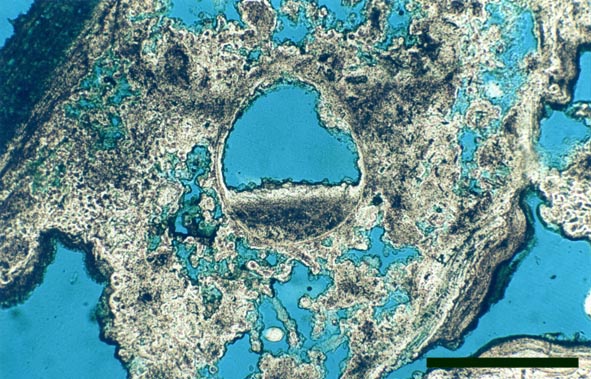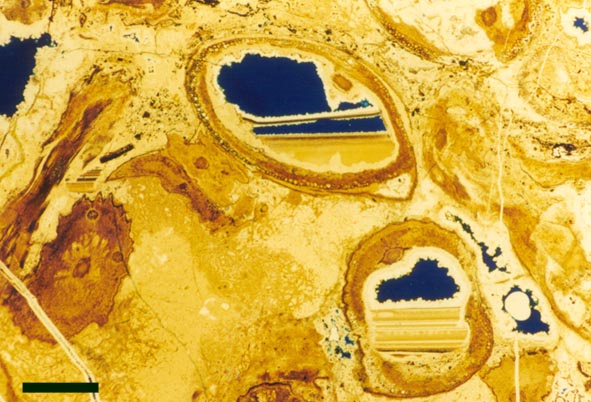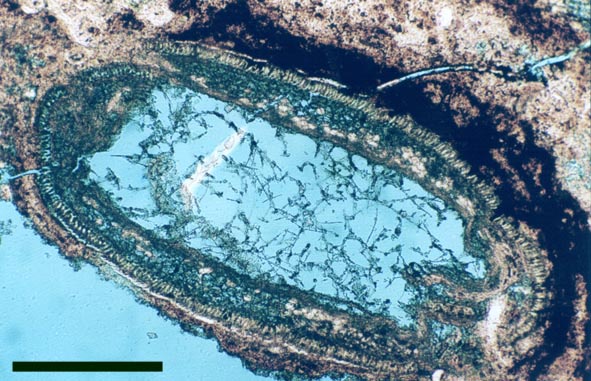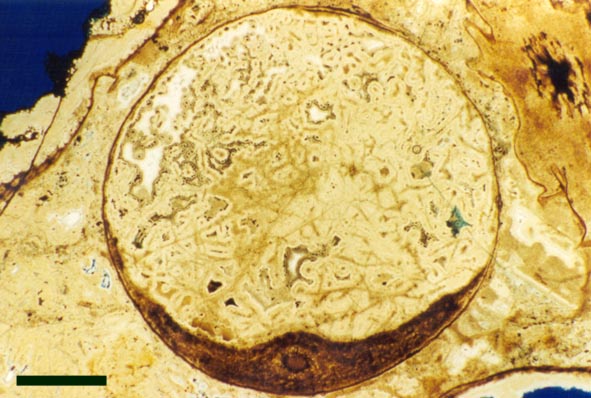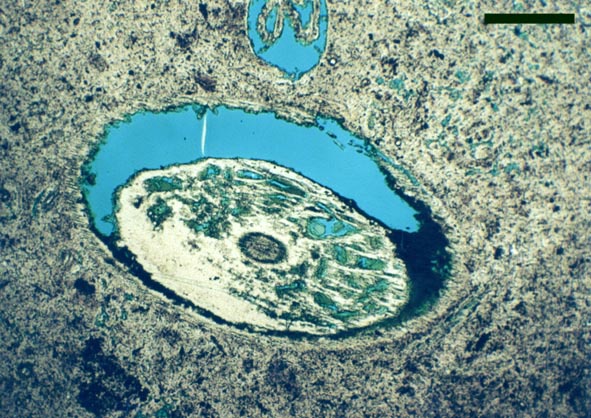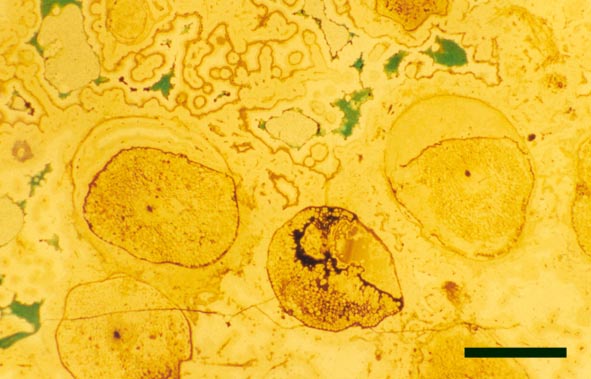By combining all the aspects of the Rhynie geology from the structural setting and sedimentology to the palaeontology and palaeobotany we can interpret the environment in the Rhynie area some 400 million years ago. As we have seen previously, the cherts and associated sediments were deposited in a narrow northeast-southwest trending basin or half-graben with a hinterland of Dalradian metamorphic and Ordovician basic igneous rocks (see Geology and Setting ). The basin sediments and rocks indicate a continental setting; generally an alluvial plain with an axial river system, floodplains and localised ponds and lakes. There appears to have been contemporaneous volcanic activity with the deposition of tuffs and the localised extrusion of andesitic lavas. We know, beyond a doubt, that the chert beds represent the surface expression of an active hydrothermal system which appears to have been fed by conduits along an active fault zone bounding the north western edge of the basin. From the suite of textures and the differing biota within individual chert beds it appears that many different sub-environments were present during the deposition of the chert, but how do we deduce these sub-environments?
We do not base our conclusions of the fossil environments on observations of the Rhynie chert alone. To help us better understand the palaeoenvironments represented by the cherts at Rhynie, modern analogues or comparative environments are particularly instructive.
Modern Analogues
We are fortunate in that there are a number of hydrothermally active areas in virtually all of the worlds volcanic regions that can be studied as possible analogues to the Rhynie chert, though only a few have the necessary requirements for geyser activity. The better known areas where geysers are seen include Rotorua in New Zealand and Yellowstone National Park in the USA. Although the structural and volcanic setting is rather different in both these areas compared with that of Rhynie, not to mention the differences in contemporary biotas, in terms of the actual surface processes and sub-environments Rotorua and particularly Yellowstone provide quite good modern analogues. By studying the sub-environments associated with these areas, the type of biota and the sediments and their textures, we can compare and contrast with similar features seen in the Rhynie chert and thus begin to interpret the ancient palaeoenvironments (e.g. Trewin et al. 2003 ).
For the purposes of this resource, we can look at these modern analogues in two main ways; in terms of 'large-scale features' such as the spatial arrangements of biota, their associations and style of preservation with respect to the hot springs and their deposits, and also in terms of 'micro-features' such as the textures formed in the modern sinters as observed under a microscope.
- Large-scale features
-
The spatial distribution of the biota with respect to the hot springs, apart from available soil moisture, nutrients and sunlight, is dependant primarily on two environmental factors: water temperature and pH. Both these factors are important, especially in hot spring areas, because different forms of life have specific tolerances to both, and thus temperature and pH tend to govern which plants and animals may flourish. These constraints would also have been applicable at Rhynie 400 million years ago.
The following table gives a general idea of the upper temperature limits of a number of animals, plants and micro-organisms ( after Brock 1994 ):
Group Upper temperature limits (oC) Animals Fish 38 Insects 45-50 Ostracods (crustaceans) 49-50 Plants Vascular plants 45 Mosses 50 Eukaryotic micro-organisms Protozoa 56 Algae 55-60 Fungi 60-62 Prokaryotes Bacteria Cyanobacteria (O2 producing photosynthetic bacteria) 70-73 Other photosynthetic bacteria (do not produce O2) 70-73 Heterotrophic bacteria (use organic nutrients) 90 Archaea Methane-producing bacteria 110 Sulphur-dependant bacteria 115 Eukaryotic organisms are unable to adapt to high temperatures, the upper limit (for fungi) being 60-62oC and for plants and animals less than 50oC. Above 62oC only prokaryotes may live, of which the photosynthetic, thermophyllic, cyanobacteria can only tolerate temperatures up to 73oC. At the highest temperatures, over 100oC, where water is boiling, only the heat-adapted, hyperthermophyllic Archaea survive.
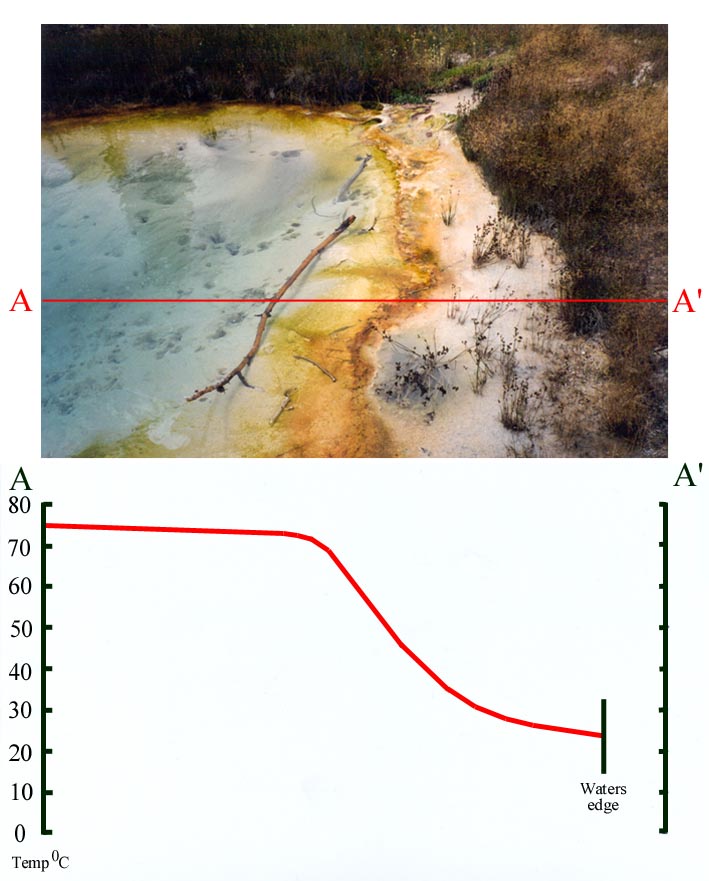
Similarly, changes in biota and the colour of cyanobacterial mats are also evident in overflow channels from geysers and hot springs, marking the temperature limits of the biota and hence the decrease in water temperature (see inset below).
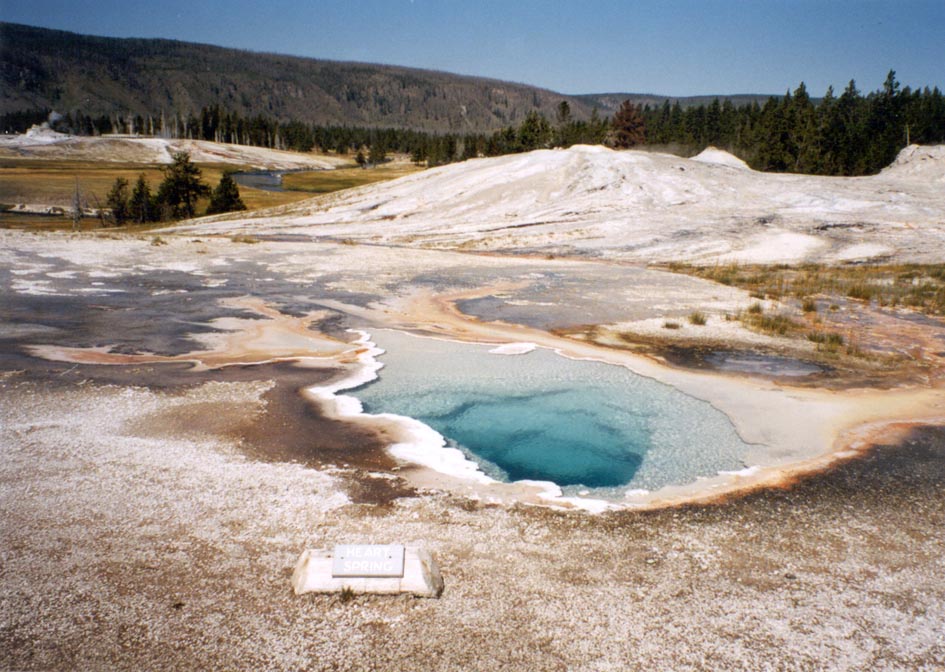
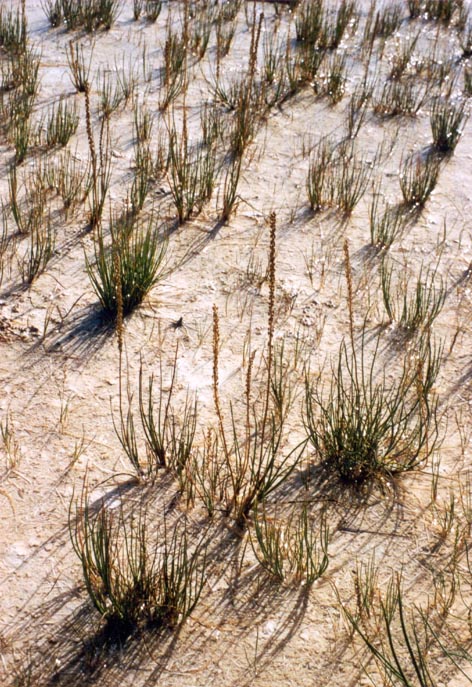
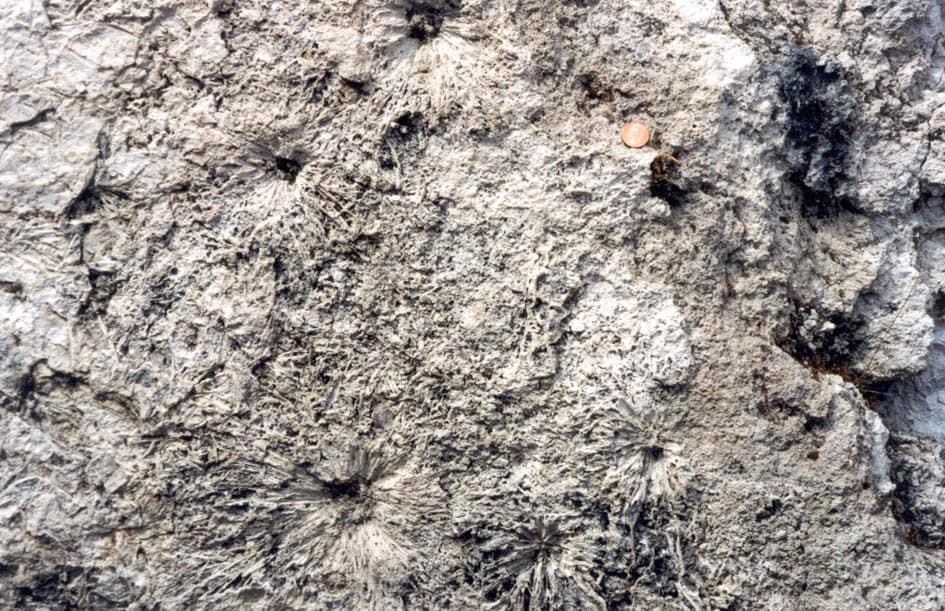
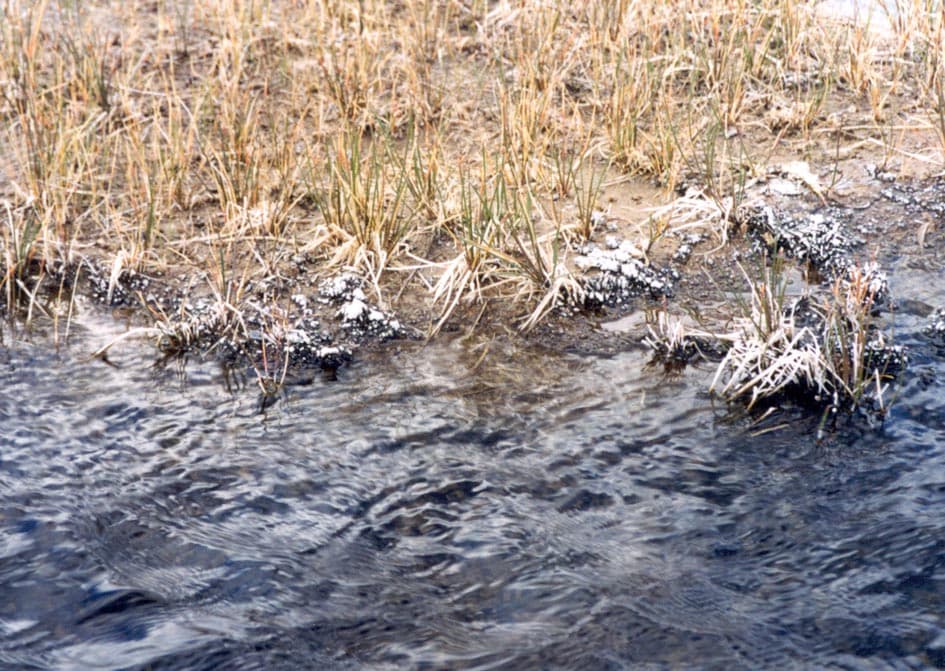
Even in cool streams fed by overflow channels from springs and geysers 10's to 100's of metres up-steam, the evaporation of waters still super-saturated with silica will deposit silica crusts on stream beds and around the bases and roots of plants ( Trewin et al. 2003 ) (see inset right).
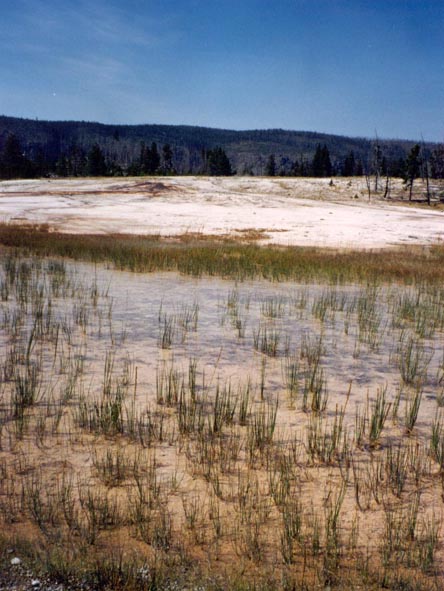
Hot springs and geyser vents may become dormant due to changes in the subterranean 'plumbing' of the hydrothermal system and may thus become 'cool pools' capable of supporting a variety of aquatic flora and fauna (see insets below).
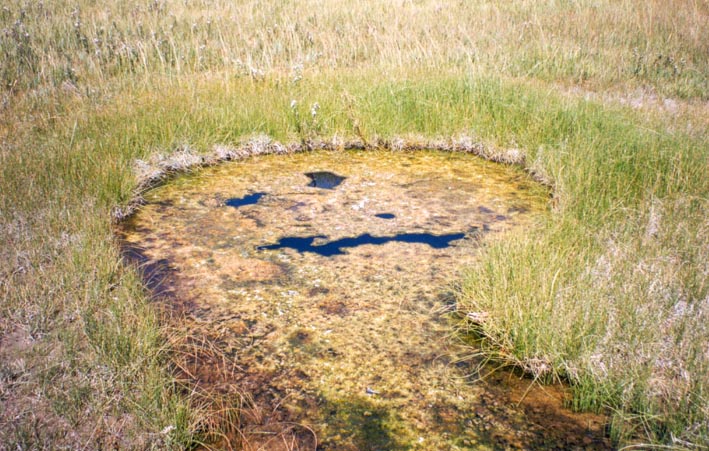
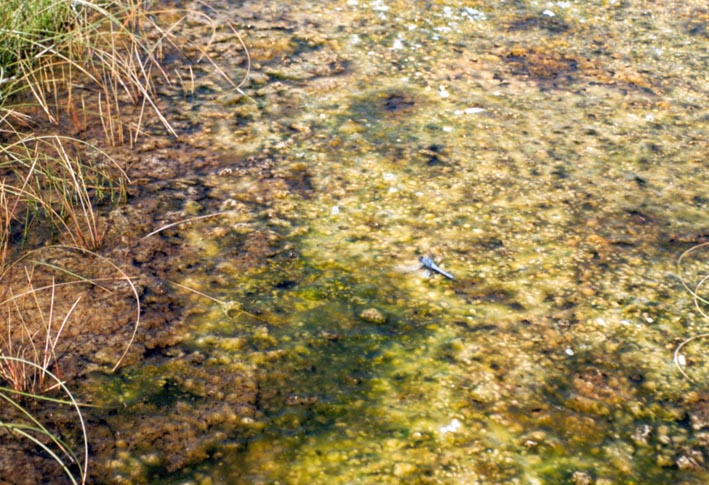
In the few examples of habitats and subenvironments given here, given the right conditions and a continuous influx of silica-charged water (cooled or otherwise), the biota and deposits of all have the potential to become silicified and incorporated in sinter for inclusion in the rock record.
From the variety of textures and biota found within individual beds of the Rhynie chert, most, if not all of the subenvironments mentioned here, or their 400 million year old equivalents, are probably represented.
- Micro-features
-
Looking at thin sections of various types of modern sinters and comparing them with textures and preservation styles seen in thin sections of the Rhynie chert can also be instructive:
Note: The blue colour in the following images represents pore space in-filled by blue-dyed epoxy resin.
